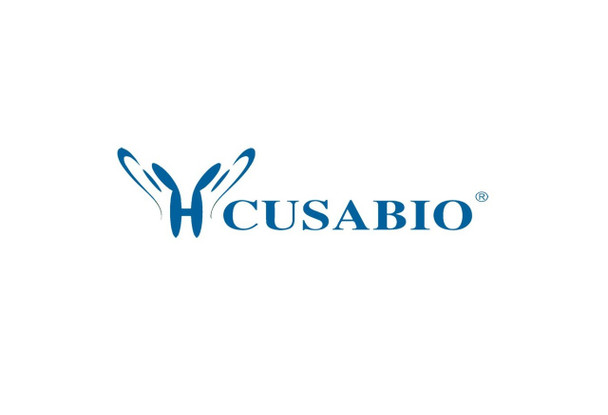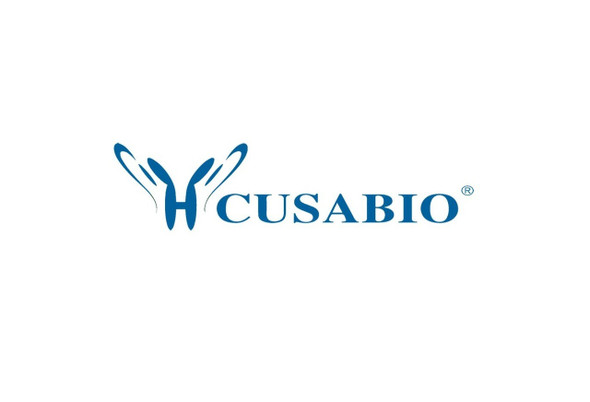Cusabio Human Recombinants
Recombinant Human Protein prune homolog (PRUNE) | CSB-EP771430HU
- SKU:
- CSB-EP771430HU
- Availability:
- 13 - 23 Working Days
Description
Recombinant Human Protein prune homolog (PRUNE) | CSB-EP771430HU | Cusabio
Alternative Name(s): Drosophila-related expressed sequence 17 ;DRES-17 ;DRES17HTcD37
Gene Names: PRUNE
Research Areas: Cancer
Organism: Homo sapiens (Human)
AA Sequence: MLRKDQKTIYRQGVKVAISAIYMDLEICEVLERSHSPPLKLTPASSTHPNLHAYLQGNTQVSRKKLLPLLQEALSAYFDSMKIPSGQPETADVSREQVDKELDRASNSLISGLSQDEEDPPLPPTPMNSLVDECPLDQGLPKLSAEAVFEKCSQISLSQSTTASLSKK
Source: E.coli
Tag Info: N-terminal 6xHis-tagged
Expression Region: 1-168aa
Sequence Info: Full Length of Isoform 6
MW: 22.5 kDa
Purity: Greater than 90% as determined by SDS-PAGE.
Relevance: Phosphodiesterase (PDE) that has higher activity toward cAMP than cGMP, as substrate. Plays a role in cell proliferation, is able to induce cell motility and acts as a negative regulator of NME1.
Reference: Human Prune homolog.Zollo M., Volorio S.Complete sequencing and characterization of 21,243 full-length human cDNAs.Ota T., Suzuki Y., Nishikawa T., Otsuki T., Sugiyama T., Irie R., Wakamatsu A., Hayashi K., Sato H., Nagai K., Kimura K., Makita H., Sekine M., Obayashi M., Nishi T., Shibahara T., Tanaka T., Ishii S. , Yamamoto J., Saito K., Kawai Y., Isono Y., Nakamura Y., Nagahari K., Murakami K., Yasuda T., Iwayanagi T., Wagatsuma M., Shiratori A., Sudo H., Hosoiri T., Kaku Y., Kodaira H., Kondo H., Sugawara M., Takahashi M., Kanda K., Yokoi T., Furuya T., Kikkawa E., Omura Y., Abe K., Kamihara K., Katsuta N., Sato K., Tanikawa M., Yamazaki M., Ninomiya K., Ishibashi T., Yamashita H., Murakawa K., Fujimori K., Tanai H., Kimata M., Watanabe M., Hiraoka S., Chiba Y., Ishida S., Ono Y., Takiguchi S., Watanabe S., Yosida M., Hotuta T., Kusano J., Kanehori K., Takahashi-Fujii A., Hara H., Tanase T.-O., Nomura Y., Togiya S., Komai F., Hara R., Takeuchi K., Arita M., Imose N., Musashino K., Yuuki H., Oshima A., Sasaki N., Aotsuka S., Yoshikawa Y., Matsunawa H., Ichihara T., Shiohata N., Sano S., Moriya S., Momiyama H., Satoh N., Takami S., Terashima Y., Suzuki O., Nakagawa S., Senoh A., Mizoguchi H., Goto Y., Shimizu F., Wakebe H., Hishigaki H., Watanabe T., Sugiyama A., Takemoto M., Kawakami B., Yamazaki M., Watanabe K., Kumagai A., Itakura S., Fukuzumi Y., Fujimori Y., Komiyama M., Tashiro H., Tanigami A., Fujiwara T., Ono T., Yamada K., Fujii Y., Ozaki K., Hirao M., Ohmori Y., Kawabata A., Hikiji T., Kobatake N., Inagaki H., Ikema Y., Okamoto S., Okitani R., Kawakami T., Noguchi S., Itoh T., Shigeta K., Senba T., Matsumura K., Nakajima Y., Mizuno T., Morinaga M., Sasaki M., Togashi T., Oyama M., Hata H., Watanabe M., Komatsu T., Mizushima-Sugano J., Satoh T., Shirai Y., Takahashi Y., Nakagawa K., Okumura K., Nagase T., Nomura N., Kikuchi H., Masuho Y., Yamashita R., Nakai K., Yada T., Nakamura Y., Ohara O., Isogai T., Sugano S.Nat. Genet. 36:40-45(2004)
Storage: The shelf life is related to many factors, storage state, buffer ingredients, storage temperature and the stability of the protein itself. Generally, the shelf life of liquid form is 6 months at -20?/-80?. The shelf life of lyophilized form is 12 months at -20?/-80?.
Notes: Repeated freezing and thawing is not recommended. Store working aliquots at 4? for up to one week.
Function: Phosphodiesterase (PDE) that has higher activity toward cAMP than cGMP, as substrate. Plays a role in cell proliferation, migration and differentiation, and acts as a negative regulator of NME1. Plays a role in the regulation of neurogenesis
Involvement in disease: Neurodevelopmental disorder with microcephaly, hypotonia, and variable brain anomalies (NMIHBA)
Subcellular Location: Cytoplasm, Nucleus, Cell junction, focal adhesion
Protein Families: PPase class C family, Prune subfamily
Tissue Specificity: Ubiquitously expressed. Seems to be overexpressed in aggressive sarcoma subtypes, such as leiomyosarcomas and malignant fibrous histiocytomas (MFH) as well as in the less malignant liposarcomas.
Paythway:
Form: Liquid or Lyophilized powder
Buffer: If the delivery form is liquid, the default storage buffer is Tris/PBS-based buffer, 5%-50% glycerol. If the delivery form is lyophilized powder, the buffer before lyophilization is Tris/PBS-based buffer, 6% Trehalose, pH 8.0.
Reconstitution: We recommend that this vial be briefly centrifuged prior to opening to bring the contents to the bottom. Please reconstitute protein in deionized sterile water to a concentration of 0.1-1.0 mg/mL.We recommend to add 5-50% of glycerol (final concentration) and aliquot for long-term storage at -20?/-80?. Our default final concentration of glycerol is 50%. Customers could use it as reference.
Uniprot ID: Q86TP1
HGNC Database Link: HGNC
UniGene Database Link: UniGene
KEGG Database Link: KEGG
STRING Database Link: STRING
OMIM Database Link: OMIM










